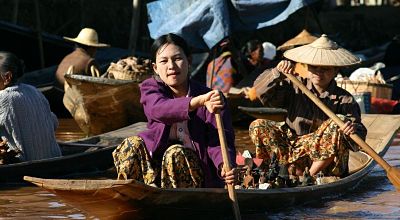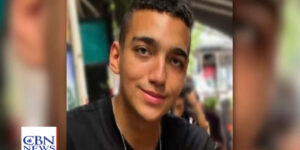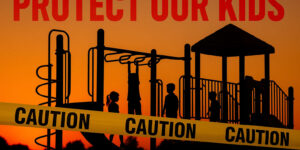Burma Reforms Offer No Respite for Ethnic Christians
Amid global euphoria over reforms in Burman-majority parts of Burma, life has changed little for more than 3 million Christians and other minorities left to suffer from one of the world’s longest running civil wars.
Headlines around the world hailed the induction on May 2 of opposition leader Aung San Suu Kyi into parliament as the beginning of a new era in Burma, officially known as Myanmar. But for the 150,000 Internally Displaced People (IDP) living in eastern Karen state’s 4,000 IDP camps, life is still about landmine blasts, gun and mortar attacks, and the possibility of a final war between armed insurgents and the Burma army.
Burmese President Thein Sein, a former military general, has introduced political reforms–the release of hundreds of political prisoners, new laws allowing labor unions and strikes and a gradual easing of media restrictions–and has reportedly ordered troops to stop offensive in ethnic areas, but senior military officials have not heeded his orders.
As part of its reform initiatives, the Burmese government is trying to ink ceasefire agreements with armed ethnic groups, including the Karen National Union (KNU) and the Kachin Independence Organization (KIO). Karen rebels, however, believe the talks are a government strategy to buy time and prepare for a showdown.
“We have seen similar efforts by the government in 1949, 1963, 1996 and 2004, but each time talks broke down,” said Saw Htee Ler, a rebel leader with the Karen National Liberation Army (KNLA), the armed wing of the KNU, which has been fighting for autonomy for more than five decades.
The government strategy, he added, is to engage the KNU in peace talks so that the military can bring supplies–arms, ammunition and food–into KNU-controlled areas without clashes.
“They have been able to freely bring in supplies in huge quantities without our men attacking them due to the tentative peace agreement reached in January,” Ler said. “They seem to be getting ready for major military operations against us in the near future.”
Aw John Nay Moo, a Karen commando from the KNLA’s “Special Force,” said the KNLA was still recruiting and training people.
“Peace talks do not mean our struggle is over,” he said. “We need to be ready all the time for a possible clash.”
Christian Civilians Targeted
Most of Burma’s Christians are from the ethnic minority groups of Karen, Karenni, Kachin and Chin and are predominantly Baptist. It is estimated that roughly 1.4 million Karens and Karenni, 1.1 million Chins and 900,000 Kachins are Christian.
While it is largely a struggle for self-determination in all ethnic states and all civilians suffer in the crossfire, the Burman-Buddhist dominated Burmese troops are often accused of being harsher on Christian civilians than on their Buddhist counterparts.
Ler, who was guarding a base on a hill about 30 minutes from an IDP camp, said military personnel target civilians because they are seen as the strength of the KNU.
“And Christians are targeted simply because their [government troops’] religion is Buddhist,” he said.
Ler said he had seen pictures of burned churches and received reports of such incidents.
Moo, the KNLA commando, agreed that Christian civilians were attacked more than Buddhist civilians. He cited a 2007 incident in Pekey Der village in Papu District under the KNLA Brigade 5 area, where troops burned down a church and “defecated on the Bible.” Moo said he learned of the incident from the church pastor.
Ler and Moo, who said they are Christians, said that they joined the KNLA to protect their land and people.
Saw Tu Tu, head of the Karen Refugee Committee, said that while all civilians face attacks, troops will not kill a Buddhist monk. “Military personnel usually take shelter in Buddhist temples,” he added.
Some churches, however, are attacked out of misunderstanding, he said.
“KNLA soldiers run to hilltops–that’s where churches are normally built – to take a strategic position when military personnel launch attacks on them,” Tu said. “And troops think the bullets are being fired from the church, and they retaliate.”
Naw K’nyaw Paw, an executive member of the Karen Women Organization who just returned from a trip to several Karen villages, said many Christians install Buddhist statues and keep Buddhist pictures in their homes to prevent attacks.
“A Christian-majority village under the KNU Brigade 1 area has turned into a Buddhist village, and the church there has been converted into a Buddhist temple, just so that government troops will not attack them,” Paw said.
In “White” and “Brown Zones,” where the government has full or partial control respectively, the medium of instruction is Burmese and not the Karen language, she added.
“They don’t even teach Karen history,” Paw said. “The government is clearly seeking cultural uniformity. We fear that we will be assimilated into the Burman culture if we give up our struggle.”
Women suffer more, she said, noting that government soldiers force local people, including women, to work as their porters, and women are often harassed sexually.
Some cases of extortion by KNLA soldiers have also come to light, but most Karen people believe these are isolated cases and maintain that KNU’s policies strictly prohibit unethical practices.
The religious dimension of the conflict can also be seen in the origin of the KNU. On Christmas Eve of 1948, Burmese forces launched a mortar-and-gun attack on a church in Mergui in southern Tenasserim Division, author Ashley South writes in his book, “Ethnic Politics in Burma: States of Conflict.” Over 80 Karens were killed and several injured. This was followed by deployment of Burmese troops in Karen state in January 1949. The KNU was then formed, followed by the KNLA.
In 1961, then-Prime Minister U Nu’s government passed the State Religion Bill in a joint session of parliament, making Buddhism the state religion. This deepened the conviction of the ethnic minorities that the Union government was being used as a tool for Burmanization and “occupation” of their areas. This followed the formation of the KIO, comprising mainly Christians, and its armed wing, the Kachin Independence Army (KIA) in Kachin state, bordering China.
In predominantly Christian Kachin state, government troops have attacked KIA soldiers and civilians since a 17-year ceasefire broke down in June last year. The fighting has displaced over 75,000 people since then, according to the Kachin Development Networking Group.
Most recently, Burmese troops fired mortar shells between Bhamo area and the city of Laiza on April 26 despite ongoing peace talks. The shelling killed two children and injured two civilian adults in Kone Law village, Kachin News Group reported. The same day, heavy fighting was reported near the northern town of Laiza, KIO’s main base, as rebels sought to block attempts by the Burma army to deliver reinforcements and supplies to a strategic army position.
Around 3,000 government forces have moved into locations around Laiza, according to Agence France-Presse.
“They are preparing to attack the KIA base in Laiza … they have reinforced a lot of troops and sent a lot of artillery but have not attacked yet,” an anonymous official was quoted as saying.
Some, however, are still hopeful of a peaceful resolution in ethnic states.
Nyo Ohn Myint, a senior member of Aung San Suu Kyi’s National League for Democracy party, who is helping the government to establish peace with ethnic armed groups, said there was a deep-rooted mistrust between the two sides that was hindering peace talks. He hoped for a change in the relationship between the two sides by around 2020.
Little or No Change
Amid conflicting media reports on how reforms have impacted ethnic minority states along Burma’s borders, where most Christians live, Compass met the displaced civilians and rebels from the KNLA at an IDP camp on a hill surrounded by landmines. The 3,000 people in this camp live in a forest area that the Burma army has unofficially designated as a “Black Zone,” an area entirely under the control of rebels.
Government troops stationed not too far from the hill can shoot-on-sight not only at Karen rebels but also civilians.
“I have no idea about the reforms being introduced in ‘Burma Proper,’ said 59-year-old Pohla Win, a lay leader of a Baptist church in the camp. “I have just heard about it on BBC Burmese radio.”
Win was seated on the floor of his house, made of bamboo and dry leaves, overlooking the Salween River where Karen children were swimming.
“I and my family will be killed on the way if we attempt to go back to our village,” he said.
Win said he fled his village in 1985 after Burmese troops launched an offensive in the area. But he arrived in this camp 18 years later, running from one village to another, walking on terrain where landmines had been laid by both the military and the rebels. Most of the families here had similar stories of how they reached the camp.
There is relative peace in the state after a tentative agreement was reached between the KNU and the government in January.
“Government check-posts are now less strict, and there are fewer clashes between troops and Karen soldiers,” said Paw of the Karen Women Organization. But there is “absolutely no change” in Black Zones, she added.
In February, more than 1,100 new refugees, about 450 of them Christian, arrived at the seven refugee camps in Thailand, “which shows there were clashes between the troops and Karen soldiers after the January’s peace agreement,” said Tu of the Karen Refugee Committee. This is in addition to the existing 74,000 registered and 53,000 unregistered refugees in those camps.
The Karen are among six other non-Burman ethnic groups – including Karenni, Kachin, Chin, Mon and Shan–that do not see their land as part of Burma. During British rule, which ended in 1948, the states where ethnic people lived were collectively known as “Frontier Areas” and were administered separately by the British, as opposed to “Burma Proper,” which was, and is, home to ethnic Burmans, mostly Buddhist.
After independence–while ethnic minority leaders were discussing with their Burman counterparts conditions under which they could join the new Union of Burma–Frontier Areas were presumed to be part of the Union under the leadership of Prime Minister U Nu, a Burman nationalist. Civil wars erupted and continue today.
Burmese President Sein is from the Union Solidarity and Development Party, which won the majority of the seats in parliament in November 2010 elections, which were seen as rigged. A source close to the government said the split between moderates and hardliners in the military was real, and that the hardliners were perhaps trying to send a signal to the president that the military “old guard” is still in power.
The constitution of Burma gives more power to the military than the civilian president and reserves one-fourth of seats for military officials in legislative bodies at all levels.
The possibility of a full-fledged war cannot be ruled out even if it is against the will of President Sein. Ethnic armed groups say they are prepared to take on the military, which could lead to an unprecedented civilian toll.






































